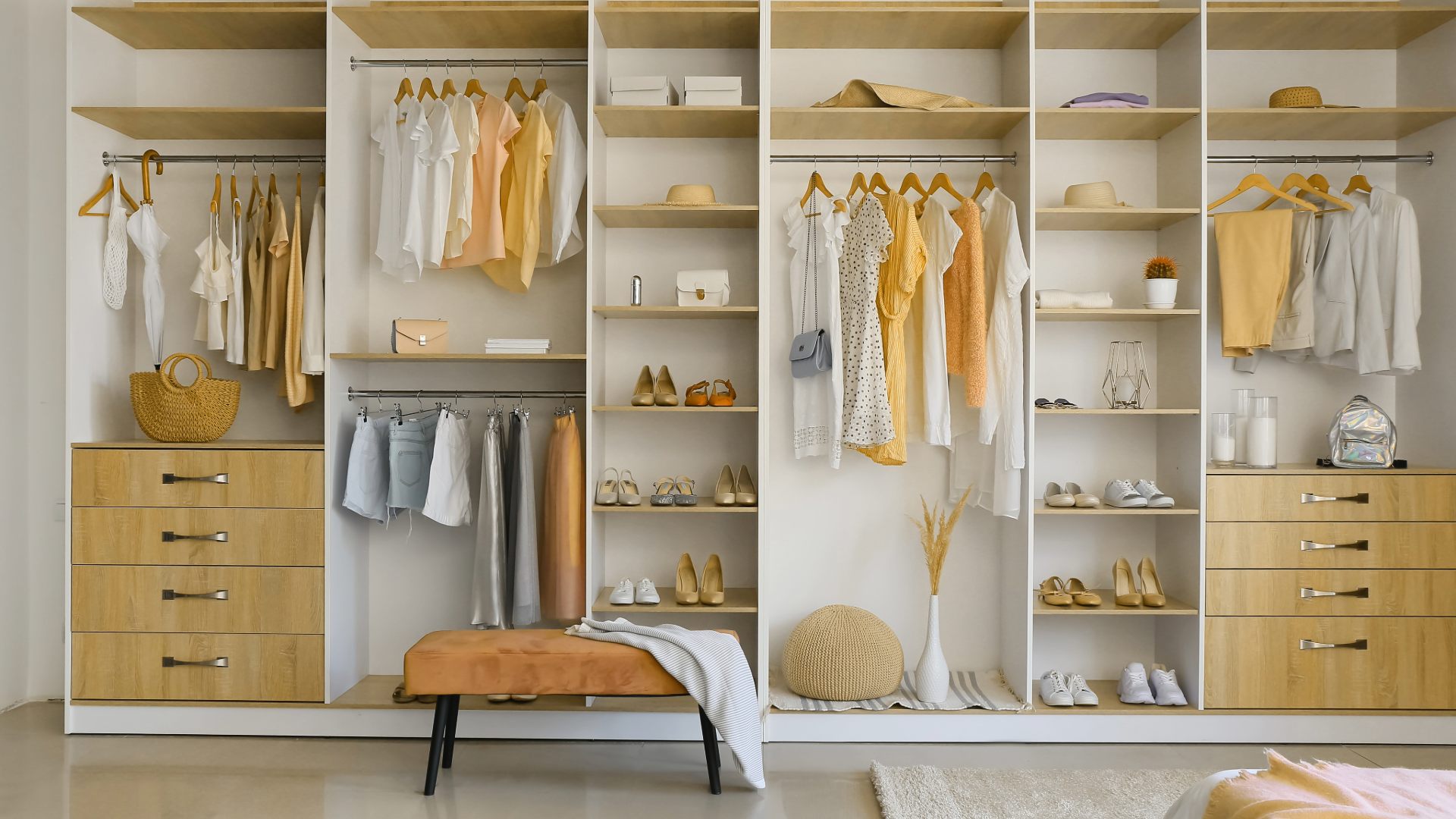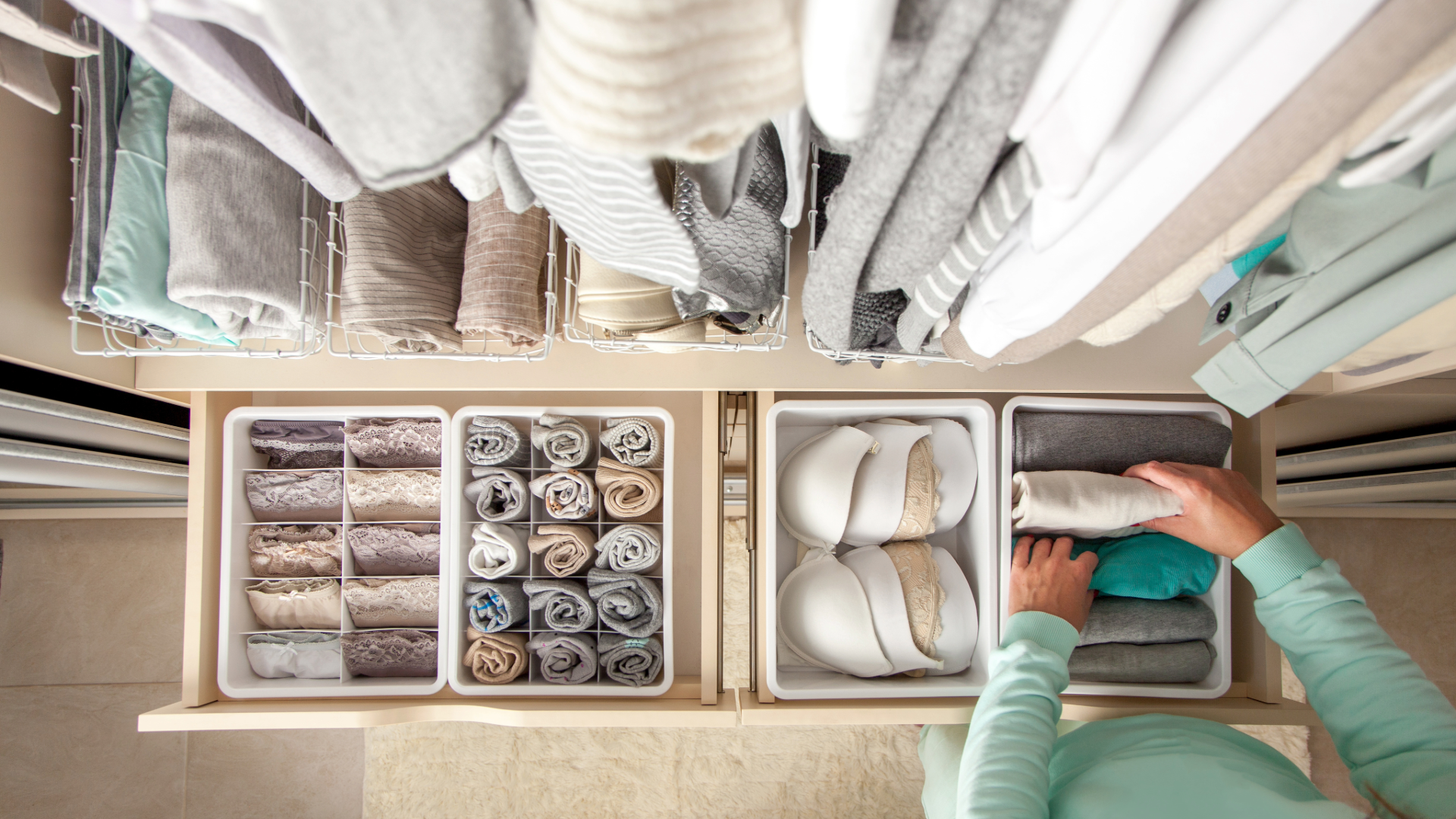How to Zone Your Closet for Maximum Clarity
A thoughtfully zoned closet makes getting dressed effortless.
“If your closet feels overwhelming, the problem isn’t too many clothes — it’s too little structure.”
A closet isn’t just a place to stash your clothes — it’s the command center of your personal style. When it’s cluttered or chaotic, you waste time, energy, and often end up wearing the same few pieces on repeat. But when your closet is zoned with intention, it becomes a tool that supports you every single day.
Zoning is about more than tidiness. It’s about creating a flow that mirrors how you actually live: work, casual, special events, lounge, and everything in between. Instead of facing a jumble of clothes competing for your attention, you open your closet and immediately see possibility. Zones give every piece a clear home, so getting dressed feels less like a chore and more like a smooth ritual.
Think of it as designing “real estate” for your wardrobe. Each zone has a purpose, and together they bring clarity, ease, and confidence into your daily routine.
Why Zoning Matters
Think of zoning your closet the way you would organize a kitchen — everything has a place and a purpose. Without zones, it’s easy for clothing to get lost, overlooked, or pile up in ways that feel overwhelming. With zones, you create natural categories that match the way you live and dress, which makes your closet not only functional but also calming to use.
Zoning helps you:
Save time – No more hunting for your favorite pair of jeans or that one blazer you know you own.
Reduce stress – A clear system eliminates daily decision overload.
Maximize space – Proper zones keep items visible and accessible.
Stay consistent – Once you set the system, it’s easier to maintain over time.
A closet with zones feels intentional — like a curated store where every piece belongs.
A zoned closet creates order and reduces daily stress compared to a cluttered, unorganized space.
Different Ways to Zone Your Closet
Once you’ve decluttered, the next step is to zone your closet in a way that makes sense for your lifestyle. Zoning is about creating visual order and making it easy to grab what you need without overthinking. Here are some of the most effective approaches:
1. By Clothing Type
Group items by category: all tops together, pants together, dresses together, etc. This is the most straightforward method and works well for people who want quick access by type.
💡 Pro Tip: Within each type, hang items from light to heavy fabric or short to long lengths for a clean, balanced look.
2. By Category (Work, Casual, Formal, etc.)
If your life involves shifting between different “modes,” this method keeps you ready. For example, work clothes on one side, weekend wear in another, and gym gear in its own section.
💡 Pro Tip: This is especially helpful for families or busy professionals who don’t want to second-guess what’s appropriate for the day.
3. By Color
Organizing by color creates a visually stunning closet and makes it easy to find pieces for outfit building. Many people love the rainbow order (ROYGBIV), while others prefer a neutral-to-bright flow.
💡 Pro Tip: If you’re short on time in the morning, color zoning can help you quickly spot what works together without digging.
4. By Frequency of Use
Keep your everyday items front and center, and move seasonal or special occasion clothing to the edges or higher shelves. This prevents “daily clutter” from less-used pieces.
💡 Pro Tip: Rotate with the seasons — pack away or shift off-season clothes to make space for the ones you’re wearing now.
5. By Uniform or Signature Look
For those who wear scrubs, restaurant uniforms, or self-imposed “uniforms” (like a favorite jeans-and-tee combo), creating a dedicated zone for these go-to outfits saves brainpower.
💡 Pro Tip: Even if your uniform is casual — like matching sweatsuits or your “Steve Jobs” black turtleneck and denim — keep them in their own section so they’re always ready.
💡 Remember: You don’t have to stick to just one method. Many closets work best with a hybrid approach — for example, organizing by clothing type first (all tops together, all pants together), then arranging each section by color. Or you might zone by category (work vs. casual) and still keep things in rainbow order within each. The goal is to create a system that feels natural to you and reduces decision fatigue, not one that follows rigid rules.
However you choose to categorize, the system should make getting dressed feel effortless. Whether you’re prepping looks for the week, setting aside outfits for filming, or just trying to make mornings smoother, the right categories make it easy to spot what you need and actually enjoy your wardrobe.
A zoned closet creates order and reduces daily stress compared to a cluttered, unorganized space.
Contain + Optimize
Decluttering and zoning are the heavy lifts, but the real magic happens when you contain and optimize. This is where your closet goes from “organized once” to “effortlessly sustainable.”
Hanging vs. Folding: Think about how your brain naturally works. If you like to see everything, hang it. (I personally hang 90% of my wardrobe — denim, sweats, even casual and event pieces.) If folding makes sense for you, that’s fine too, but avoid tall, unstable stacks that hide what you own.
Bin & Cube Storage: Not everything needs to be folded to perfection. Bras, socks, workout clothes, and underwear are often easier to maintain when tossed into bins or cubes. It’s faster, and you’ll actually keep it up long-term.
Visibility is key: Clear bins, open baskets, and slim dividers make it impossible for items to disappear into the back of your closet. If you can see it, you’re more likely to wear it.
Maximize “prime real estate”: Keep your most-used clothing within arm’s reach, at eye level. Seasonal or occasional items can live higher or lower.
The “wear what you see” rule: Front and center = worn often. Buried = forgotten. If you’re not seeing something, chances are you’re not using it.
The best system isn’t the one that looks prettiest on Pinterest — it’s the one you’ll actually use. Build your closet around your natural habits, and you’ll stay organized without even thinking about it.
Containment makes your closet system easier to maintain — choose bins or drawers that match your habits.
Closet zoning is more than tidying up — it’s about creating a system that works with your lifestyle. Whether you’re a “hang everything” type, a “fold it neatly” type, or a little of both, the right setup saves you time, reduces stress, and makes daily dressing intentional instead of overwhelming.
Start small. Choose one zone, practice letting go of what doesn’t serve you, and use the right containers to keep your flow easy. Over time, you’ll notice the difference: less decision fatigue, more joy getting dressed, and a space that feels aligned with who you are right now.
✨ Ready to take the next step? Book a free consultation to start your personalized closet transformation. Together, we’ll design a system that feels as good as it looks.



